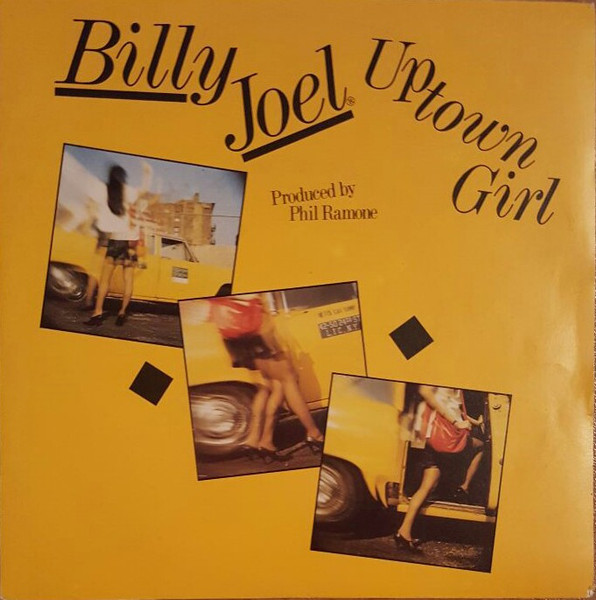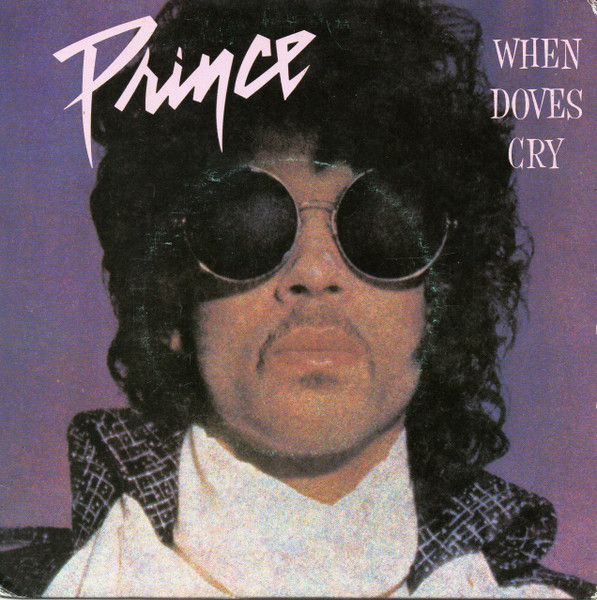 When “Turning Japanese” by The Vapors hit the airwaves in 1980, it was an instant lightning bolt of quirk, attitude, and unforgettable melody. Bursting out of the tail end of the punk explosion and surfing the rising tide of new wave, this oddly titled and endlessly catchy single became both a worldwide hit and one of the most misunderstood songs in pop history. Built around an urgent, choppy guitar riff and David Fenton’s anxious vocals, the track was infectious, humorous, and a little mysterious—qualities that helped it endure for decades as both a party anthem and a curious cultural artifact. Its sound fit perfectly into an era when The Knack’s “My Sharona” and The Pretenders’ “Brass in Pocket” dominated radios, yet “Turning Japanese” stood apart with its offbeat energy and cryptic charm.
When “Turning Japanese” by The Vapors hit the airwaves in 1980, it was an instant lightning bolt of quirk, attitude, and unforgettable melody. Bursting out of the tail end of the punk explosion and surfing the rising tide of new wave, this oddly titled and endlessly catchy single became both a worldwide hit and one of the most misunderstood songs in pop history. Built around an urgent, choppy guitar riff and David Fenton’s anxious vocals, the track was infectious, humorous, and a little mysterious—qualities that helped it endure for decades as both a party anthem and a curious cultural artifact. Its sound fit perfectly into an era when The Knack’s “My Sharona” and The Pretenders’ “Brass in Pocket” dominated radios, yet “Turning Japanese” stood apart with its offbeat energy and cryptic charm.
From its opening riff, “Turning Japanese” captures the energy of youthful alienation and paranoia—emotions that were bubbling under much of the early ’80s pop landscape. It wasn’t just another punk hangover tune; it was something sharper, more self-aware, and undeniably British. For all its humor, the song tapped into something universal: the frustration of love, the madness of obsession, and the feeling of identity slipping away in the chaos of infatuation. And yet, for all its artistic merit, “Turning Japanese” quickly became more known for its bizarre interpretations than for the band who wrote it.
The Birth of a Quirky Classic
By the late 1970s, The Vapors were an upstart band from Guildford, England, formed by singer-guitarist David Fenton, bassist Steve Smith, guitarist Edward Bazalgette, and drummer Howard Smith. They were discovered by The Jam’s bassist Bruce Foxton, who took them under his wing and helped them secure management and a record deal. Their sound was rooted in the post-punk and new wave scenes that were taking over London—angular guitars, driving rhythms, and sharp, hook-laden songwriting.
In 1980, The Vapors released their debut album, New Clear Days, and “Turning Japanese” was its breakout single. Produced by Vic Coppersmith-Heaven, who also worked with The Jam, the song was a perfect distillation of early-’80s British new wave: tight, efficient, and bursting with nervous energy. The title alone was enough to draw curiosity, but it was the song’s combination of emotional angst and pop precision that made it a smash.
When asked about the song’s origins, Fenton explained that “Turning Japanese” was written about emotional isolation and obsession, particularly through the lens of a young man dealing with unrequited love and loneliness. The now-famous title, he said, was never meant to be taken literally—it was a metaphor for a transformation brought on by frustration and longing. The strange phrase was simply an expression of the narrator’s mental state, not a reference to race or culture. Yet despite his explanations, the world quickly ran with a far different—and much bawdier—interpretation.
The Myth and the Misinterpretation
Perhaps more than any other song of its time, “Turning Japanese” became trapped in rumor. Almost immediately after its release, people began claiming the song was a euphemism for masturbation—that “turning Japanese” was slang for the facial expression one supposedly makes while, well, entertaining oneself. The myth spread faster than the truth, and before long, it was accepted as fact in pop culture circles.
David Fenton has repeatedly denied this interpretation, calling it “complete nonsense”, and there’s no evidence to support that such slang ever existed before the song. In interviews, he’s clarified that the song is about feeling alienated and changed by the emotions of love, about how heartbreak and obsession can make someone feel like they’ve become someone else entirely. “Turning Japanese” wasn’t about sex—it was about identity and emotional metamorphosis.
Still, the rumor persisted. Radio DJs winked when introducing the song, teens giggled at the title, and moral watchdogs in certain markets briefly considered banning it. Ironically, the controversy only made the song more popular. By the time the dust settled, “Turning Japanese” had become a top-10 hit in both the UK and the US, and a permanent fixture of new wave compilations for decades to come.
The Sound of Nervous Energy
Beyond the controversy, “Turning Japanese” is musically a small masterpiece of pop craftsmanship. It opens with a signature riff that feels both tense and playful, immediately setting the tone for what’s to come. The staccato rhythm of the verses matches Fenton’s agitated lyrics:
“I’ve got your picture, I’ve got your picture / I’d like a million of them all ’round my cell…”
The lyrics describe a protagonist so consumed by longing that he’s losing his sense of self, surrounded by photos of the one he loves, trapped in a cycle of obsession. The refrain—“Turning Japanese, I think I’m turning Japanese, I really think so”—feels like a mantra of madness, the words of someone who’s spiraling into emotional overload.
Musically, the song borrows from both punk and ska influences, with its sharp chord changes and brisk tempo. The clean guitar tone, punctuated by a steady, almost martial drumbeat, gives the track a nervous precision that mirrors the lyrical content. The bridge introduces a brief instrumental break filled with a pseudo-Oriental melody line, a cheeky nod to the song’s title that would later be both praised for its humor and criticized for cultural stereotyping.
Yet, taken as a piece of pop art, “Turning Japanese” is brilliant in its construction. It’s tight, infectious, and filled with contrast—the sunny exterior hides a manic emotional undertow. In that sense, it perfectly captures the new wave era’s obsession with irony and contradiction.
A Snapshot of Its Time
To understand “Turning Japanese,” it helps to see it as part of the cultural moment from which it emerged. The late ’70s and early ’80s in Britain were a time of political tension, economic struggle, and restless creativity. Punk had stripped rock down to its raw essentials, and new wave bands were rebuilding from that rubble with melody and style.
The Vapors fit right into that transition. They weren’t angry punks, nor were they glossy pop stars. They were clever, musically tight, and full of wit. Their music carried the bite of post-punk but with the melodic sensibilities of The Beatles and The Kinks. “Turning Japanese” landed in the same era as The Jam’s “Going Underground”, XTC’s “Making Plans for Nigel”, and The Knack’s “My Sharona”—songs that used pop hooks to smuggle in deeper ideas about frustration, identity, and modern life.
What made The Vapors stand out was their knack for merging introspection with humor. “Turning Japanese” walks a fine line between self-deprecation and sincerity. Beneath the cartoonish title and bouncy beat lies a darkly relatable emotion: the way heartbreak can twist one’s perspective until even the self feels foreign. That blend of wit and melancholy would become a hallmark of British pop for decades afterward.
The Aftermath: One-Hit Wonders and Cult Status
Despite the massive success of “Turning Japanese”, The Vapors struggled to follow it up. Their second album, Magnets (1981), contained strong material and social commentary, but it failed to make a commercial impact. By 1982, the band had disbanded, casualties of a fickle music industry that too often discards talent after a single defining hit.
Yet “Turning Japanese” never truly went away. It became a staple of ’80s nostalgia radio and an enduring symbol of the era’s eccentric creativity. The song has been covered and referenced countless times—in TV shows, films, and commercials—and remains instantly recognizable from its first jangly chord.
The Vapors themselves reunited in the 2010s, performing for loyal fans who had never forgotten them. In interviews, Fenton expressed surprise and gratitude at the song’s longevity, admitting that its meaning has evolved for him over time. What began as a reflection of personal frustration has become a cultural touchstone, a reminder of when pop music was willing to be strange, funny, and deeply human all at once.
Cultural Reflection and Modern Reappraisal
In today’s more culturally aware climate, “Turning Japanese” occasionally draws criticism for its title and perceived insensitivity. Some listeners interpret it as trivializing or stereotyping Asian identity. However, it’s worth noting that The Vapors never intended any racial or cultural commentary—the phrase was chosen for its sound and strangeness, not as an ethnic reference.
When viewed in its proper historical context, “Turning Japanese” reads less as a caricature and more as a surreal metaphor for emotional transformation. It reflects the era’s fascination with the East—not in a malicious sense, but as part of the 20th-century pop lexicon where global references were common and often misused. Songs like David Bowie’s “China Girl” or The Vapors’ track sit at the intersection of curiosity and cultural clumsiness, revealing both the openness and the naivety of Western pop in that period.
Nevertheless, the song’s staying power lies not in its title, but in its universal emotional core. Anyone who’s been obsessed, heartbroken, or lovesick enough to lose themselves can understand what “turning Japanese” really means—a kind of internal madness that overtakes logic and self-control.
Legacy of a Left-Field Hit
“Turning Japanese” endures because it’s the perfect example of pop music’s ability to capture something deeply personal in a wildly unconventional way. Its combination of humor, paranoia, and melody makes it one of the most distinctive singles of the new wave era. The Vapors may have been labeled a one-hit wonder, but what a hit it was—a song that still sparks conversation more than forty years later.
In an era when radio was dominated by rock ballads and disco leftovers, “Turning Japanese” was a breath of fresh, neurotic air. It sounded like nothing else, yet it captured everything about its time: the uncertainty, the self-doubt, the frantic energy of a generation coming of age in the shadow of punk.
Decades later, when that jangly riff kicks in, listeners are instantly transported back to 1980—a time when music could be weird, witty, and wonderfully catchy all at once. And as the chorus chants on, it’s easy to see why “Turning Japanese” has lasted: it’s not about race or rumor, but about emotion, obsession, and the strange transformations that love can bring.
In the end, The Vapors gave the world more than a quirky pop song—they gave it a mirror for the beautiful absurdity of being human.


